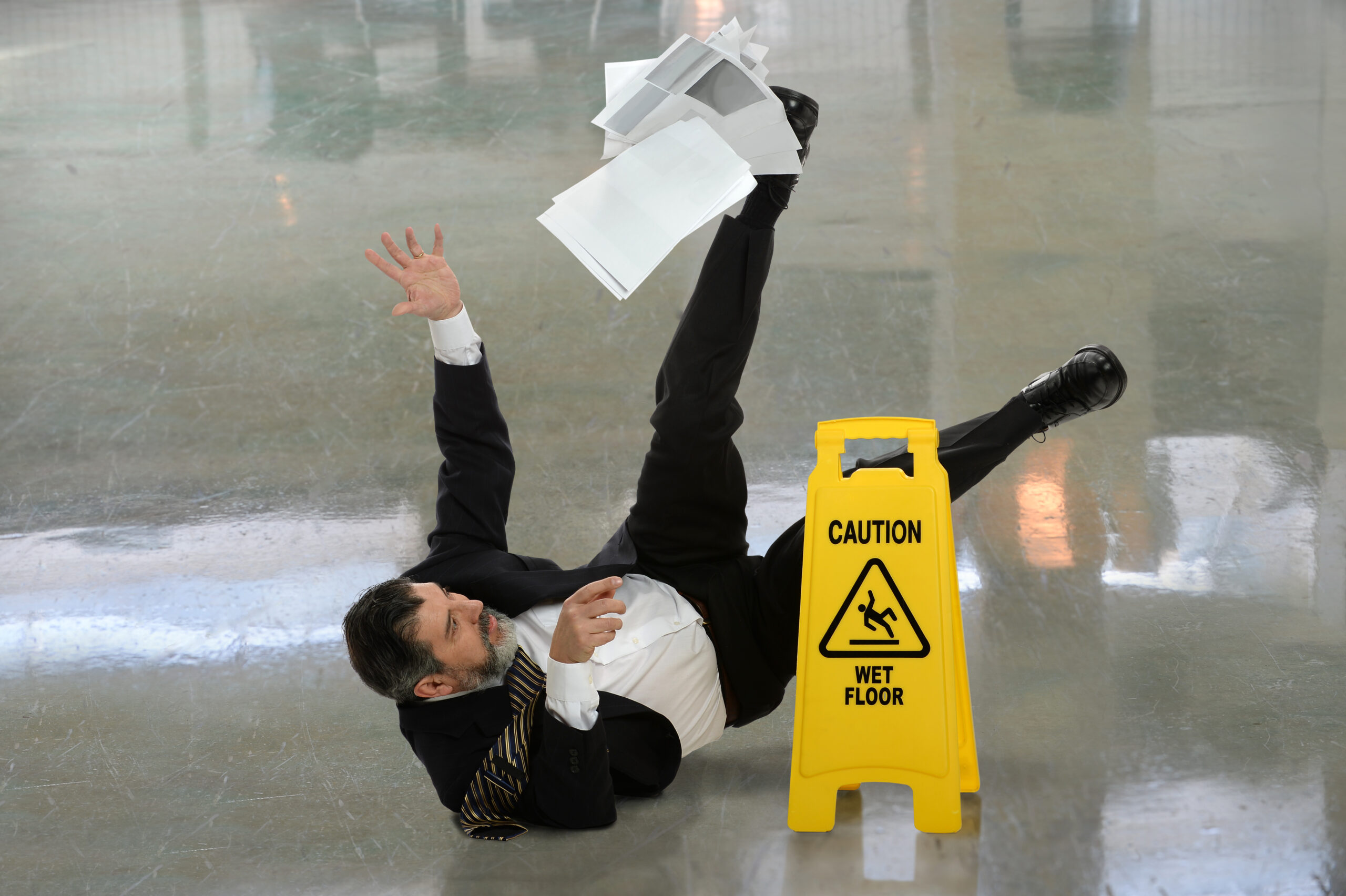TWO OFFICES IN NEW YORK CITY • Hablamos Español

New York’s personal injury law firm
Click For Your Free ConsulationNYC Personal Injury Lawyer » New York Personal Injury Blog » Common Causes of Slip and Fall Accidents in NY
Posted in Slip and Fall Accidents on January 9, 2024

A slip and fall can happen anywhere, including at home, a grocery store, a parking lot, or on the job. In 2021, more than 44,600 people in the United States died in falls, many from falls on the same level. Of the 8 million ER visits every year for falls, about 12% are for slip and fall accidents.
When slips, trips, and falls happen on someone else’s property, they may be legally responsible for injuries if they fail to prevent these accidents. It’s essential to understand the most common causes of slips and falls, and the duty property owners have under New York law.
A slip happens when the friction between shoes and a surface isn’t enough to resist the force of the movement. Worn-out or improper shoes are one of the most common factors in slips and falls. When the soles are too worn out, or the sole isn’t designed for the floor surface, the risk of slipping increases tremendously.
Shoes can be highly rated for one type of surface while providing little to no slip-resistance on other surfaces. For example, shoes with high slip resistance on greasy or oily surfaces usually offer very little slip resistance on cold surfaces.
The slip resistance of shoes can be measured in many ways.
Common ratings on safety footwear include:
One study involving 17,000 food service workers found providing workers with high-quality slip-resistant shoes at no cost reduced slip and fall accidents by 67%.
Wearing proper footwear reduces the risk of slips and falls on the job. The type of footwear can also be a factor in premises liability cases. If the shoes you were wearing when you slipped were dangerous or inadequate for the conditions, you may be found partially at fault for your fall.
Many slips and falls happen when spills are not cleaned up promptly. They can also happen when water is tracked into a building from outdoors when it’s been raining or snowing.
Property owners have a duty to address hazards like spills and wet floors. This may include cleaning up spills as soon as possible, displaying warning signs, and taking steps to prevent floors from getting wet in the first place. This includes installing absorbent anti-slip mats at entrances.
Wet interior floors are not the only slip hazard; wet or icy sidewalks, parking lots, and walkways can also be dangerous. This is why property owners have a duty to promptly shovel, salt, and plow in the winter.
Some floor surfaces are naturally slippery with little traction to prevent slip and fall accidents.
The most slippery flooring materials include:
Most of these surfaces are very smooth and non-porous. Even if they aren’t wet, walking too fast or wearing improper footwear can be enough to slip.
Surfaces can also become dangerously slippery if a dry material like powder is spilled or the floor has been freshly waxed or polished.
Flooring that’s damaged or incorrectly installed or maintained can be dangerous and create trip and slip hazards.
Examples of uneven or damaged surfaces include:
Property owners have a duty to inspect their property regularly to identify and correct hazards or warn visitors about these dangers.
Insufficient lighting is considered a safety hazard when it conceals obstacles that would otherwise be visible and avoidable. Poor lighting in parking lots, stairways, and other areas can cause a slip and fall accident. Poor lighting can make it too hard to see an icy patch or other hazard in time to avoid it.
Property owners have a duty to maintain safe premises under New York premises liability law. If the property owner knew or should have known a dangerous condition existed and did not take reasonable steps to fix it, they may be liable for resulting injuries.
Premises liability is a complex area of law. If you have suffered serious injuries in a slip and fall accident, it’s vital to seek experienced legal counsel.
If you need legal assistance, contact the New York City slip and fall accident lawyers at Law Offices of Jay S. Knispel Personal Injury Lawyers at your nearest location to schedule a free consultation.
We have two convenient locations in New York:
Law Offices of Jay S. Knispel Personal Injury Lawyers – New York City Office
450 7th Ave #409
New York, NY 10123
(212) 564-2800
Law Offices of Jay S. Knispel Personal Injury Lawyers – Brooklyn Office
26 Court St Suite 2511
Brooklyn, NY 11242
(718) 802-1600
Recent Posts
Categories
